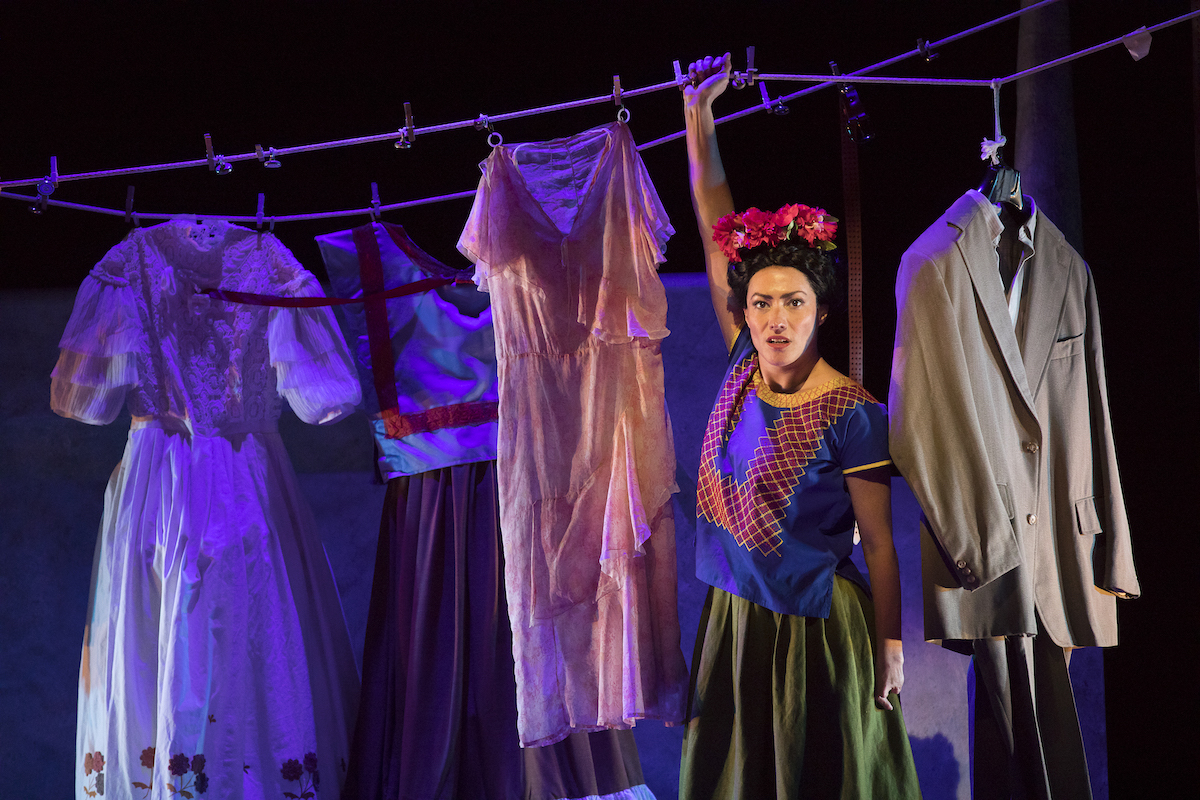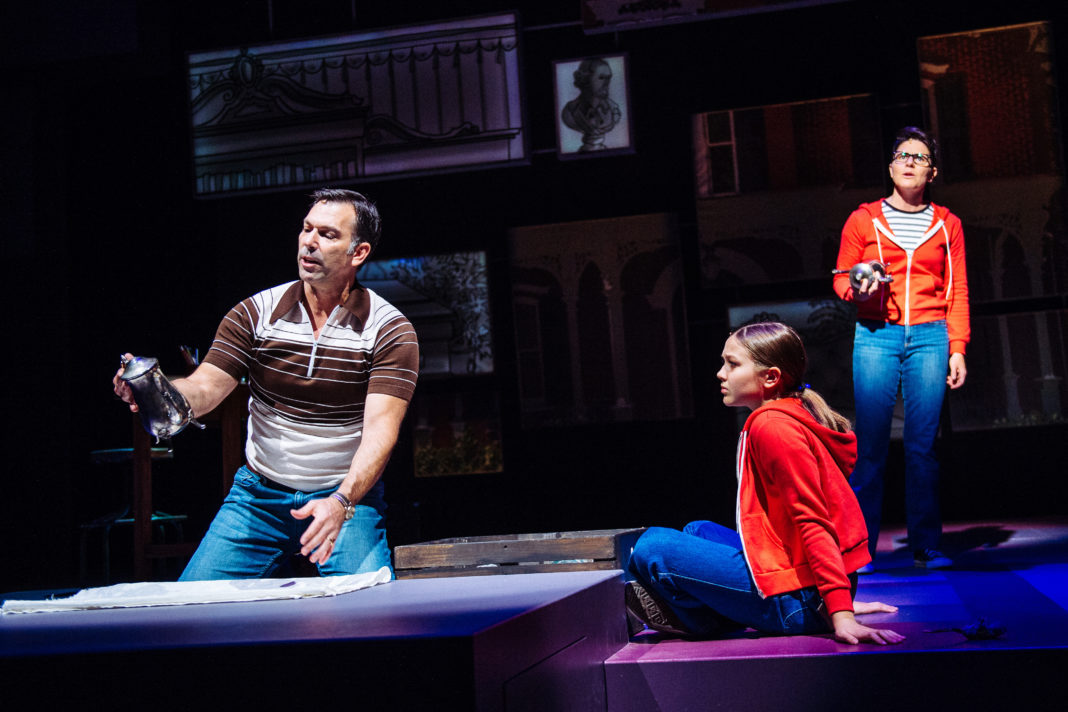After more than a year-long hiatus, Portland Center Stage at The Armory welcomed audiences back to the theater with a one-woman story of reflection, healing and dual-portraiture in Frida…A Self Portrait, written and performed by Brazilian actress Vanessa Severo.
Set in her home in Mexico City, La Casa Azul, Frida Kahlo welcomes a magazine reporter into her home the night before her passing for an interview. Through retrospectives curated as costume changes strategically pinned up on clotheslines in the opening scenes—and an arsenal of narrative devices—Severo recounts a multitude of chapters in the artists’ life in a 75-minute solo performance. From the bus accident that severely injured her to her tumultuous relationship with fellow painter Diego Rivera and more, the performance navigates the many complexities of Kahlo’s identities.
Severo introduces the show by breaking the fourth wall, letting the audience in on how her connection to the artist has evolved as the production has been in development. Frida…A Self Portrait came into fruition in 2014, after a friend of Severo’s commented on her likeness to Kahlo. Uncertain of what they meant and interested in learning more about the artist, she embarked on a whirlwind journey that led her to discovering more than she could have imagined.
Through the development of the production, from her first performance at the Living Room Theatre in Kansas City in 2014 to her debut show in Portland, the script would undergo changes that brought forth events in the actress’s own life, as Severo realized that portraying Kahlo would have more personal implications than she originally thought.
“On this journey to find Frida, I was surprised that in order to tell her story I had to tell mine,” said Severo, in a 2019 interview.
Frida…A Self Portrait gradually became an intimate exploration of Severo’s own experiences as much as the artist she sought to pay homage to. Severo, who has a congenital defect on her left hand, was particularly moved by how Kahlo navigated the art world as a disabled woman; how she expressed her nuanced relationship with her body, complicated relationships and view of society and its treatment of her, through her paintings—and her unapologetic nature in doing so.
On stage, Kahlo takes the journalist through her life story—in one of the many ways she told it—diving into prominent moments and zooming out to make commentary as she answers his questions, or addresses the audience. On a few occasions, Severo steps out of character, sharing personal anecdotes, drawing parallels between the artists’ and her own experiences. Kahlo copes with her polio diagnosis and the subsequent effect of it on her legs—her right becoming thinner than her left—and the pressure to walk, unhindered by the pain it caused her. Severo shares a scene from her childhood in which she had to decide whether or not she should move forward with a surgery in which her toes would be attached to her hand, the intent being to grant her mobility akin to fingers, albeit inevitably taking away the mobility from her foot. Both women express feeling pressure to adhere to a world that wants them to be as close to able-bodied as possible, no matter how much of themselves they have to sacrifice, to fit whichever ideas of them would best suit them.
“We need to tell our stories to heal,” said Severo to the opening night crowd. She described the vulnerability it took to include herself in the production as something she fought against internally—however, she came to see a new layer of her connection to Kahlo and more freedom with the performance as a result. At the end of her monologue, Severo shares a line from Kahlo’s own diary that punctuates her resonance with the artist’s experiences:
“I used to think I was the strangest person in the world, but then I thought there are so many people in the world, there must be someone just like me who feels bizarre and flawed in the same ways I do. I would imagine her, and imagine that she must be out there thinking of me, too. Well, I hope that if you are out there and read this and know that, yes, it’s true I’m here, and I’m just as strange as you.”
A notion that can be garnered from Kahlo herself—as well as in Frida…A Self Portrait—is that, as much as isolation or death may be an art, legacy is too. She would leave behind numerous self-portraits illustrating her life in all its realities unapologetically. Her home would evolve into a museum, a place for the public to have a curated glimpse of her life without giving away too much. She would leave memories of her resistance to peoples’ attempts to control her and fit her into their narratives of who she was, a defiance that continues to speak volumes for Severo.
Showings of Frida…A Self Portrait are available now until Nov. 7. Tickets are on sale at Portland Center Stage’s official website with discounts available for full-time students who can provide ID and proof of enrollment.






